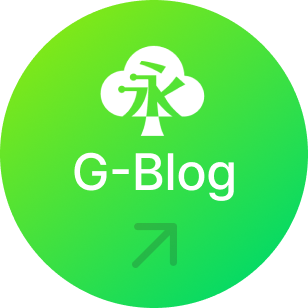Artificial Intelligence and ERP

Dong Hyurk Jeong
Principal Research Engineer, YoungLimWon Soft-Lab
The era of artificial intelligence has arrived.
Google and OpenAI have competitively released generative AI, and it is said that various office programs are now equipped with AI to enhance work efficiency.
Shopping malls continue to try to expose products recommended by artificial intelligence to me through advertisements, and Netflix and YouTube also recommend videos to me using the same principle.
YoungLimWon Soft Lab’s ERP also faced the challenge of applying AI to keep up with the times.
I worked as a business unit developer at YoungLimWon Soft Lab and have also gained experience as a consultant and project manager (PM). Currently, my job has been switched to the department in charge of AI at the research institute.
In this article, I will consider how to embed artificial intelligence into ERP and examine its effectiveness.
The artificial intelligence technologies we primarily use and discuss these days are based on machine learning, including deep learning.
Machine learning is classified into supervised learning, unsupervised learning, and reinforcement learning.
1. Supervised learning is a method of learning patterns from data with labels (correct answers) and predicting labels for new (unlabeled) input data. The data from which patterns will be learned must be well preprocessed. The correlation between the data to be trained and its label is analyzed, and the correlation coefficients are reflected in future predictions.
2. Unsupervised learning involves training data without labels. It is mainly used to understand the internal structure of data or classify it into similar groups
3. Reinforcement learning is a method of setting rules, rewarding when good results are obtained when performing within the rules, and selecting actions in the direction of obtaining greater rewards during repeated performance.
Supervised learning can be used for prediction.
What if you could forecast demand for next year’s business and reflect it in your business plan?
In ERP, sales data is accumulated over the period of use, and the change in sales by year or month has a certain pattern. Also, if you find external factors that are correlated, more accurate predictions become possible.
Even though it is an accurate prediction, it is difficult to assume that it is 100% accurate. Since machine learning learns past data and makes predictions based on the patterns, the prediction rate is considered good even if it is only 60-70% correct. Taking this into account, guidance should be given to use it, and it can be used to the extent of automatically generating a sales plan.
Before the emergence of ChatGPT, a generative AI, chatbots were based on a *rule-based system.
Of course, NLP (Natural Language Processing) AI technology was applied to recognize the context itself, not the words of the question, and provide an answer appropriate to the context, but the range of motion was narrow because the answer was within a database set by the designer.
The landscape changed with the advent of ChatGPT. There is no need to go through the trouble of programming a chatbot, just create a chatbot UI and call ChatGPT to connect. Of course, you have to pay a usage fee.
Imagine attaching that chatbot to the ERP screen. Since it would be cumbersome to type out questions to the chatbot, let’s consider adding a voice recognition module.
A chatbot can sit next to the ERP screen and act as a secretary. You can run searches by giving verbal commands and enter data using words, so there is no need to open a manual. Just ask the chatbot.
However, as users of K***Talk may know, voice recognition technology is not yet highly accurate. Users may try it out a few times and end up not using it if it is not accurate.
However, voice recognition will also continue to develop. If machine learning technology is applied, it will be possible to identify someone by voice, and once the person’s voice pattern is learned, the recognition rate will increase.
As Chat GPT becomes smarter, ERP also becomes smarter.
Artificial intelligence technology will reduce hand movements to enter ERP data.
Consider a company that receives an order form by email, checks it, then opens the ERP order registration screen and enters it. Order emails can be filtered and imported into ERP, and data corresponding to the order details can be extracted by searching the email body and attached files.
Then, the order data can be automatically generated through the purchase order emails, and the responsible party only needs to review and confirm the generated order data.
Research still needs to be done on what artificial intelligence technology will be used when extracting data here. Order forms will all be in different formats and various names such as product name/item/ITEM/part will be used. This data must be handled with caution because even a 0.01% error rate can render it difficult to use.
How else can ERP be transformed with artificial intelligence?
To realistically address this concern, you will need knowledge of what artificial intelligence technologies are currently applicable. However, there will be processes that can be automated even without artificial intelligence technology. For customers, it doesn’t matter at all what AI technology is used. I just want an easy, fast, and accurate system.
AI technology continues to develop. Even if it cannot be implemented today, there will be technologies that can be used someday. So, let’s imagine to our heart’s content what we would like AI ERP to do for us.
<Annotation>
*Rule-based system: It refers to an artificial intelligence system that operates on predefined rules. Though it falls under the broader category of AI, it is distinct from what we typically conceive as AI, being more akin to programming due to its reliance on IF-THEN logic.






